Norsing Around, Part 2
Last week, I began telling you the story of Kaldheim's design. I've structured my story in a way that looks at each of the eight topics we wrote up during our first meeting, things that we thought players would expect from a Norse-inspired set. They are:
- Gods
- Some riff on the nine realms
- Many specific creature types (Elves, Dwarves, Giants, etc.)
- Specific weapons (hammers, axes, swords, etc.)
- Norse-style magic (runes, omens, zombies, etc.)
- Lots of fighting/combat-centric things
- Other resonant Viking things (helmets, boats, funerals, etc.)
- Cold climate
I talked about the first four last week. I'll talk about the second four today. Also, I have a cool preview card to show off with one of the new mechanics. I'll show it to you all when we get to the appropriate section. But before we get to any of that, I want to introduce you to the Vision Design and Set Design teams.
Click here to meet the Vision Design team
Starting with Zendikar Rising, I'm having the lead of each team introduce their team members. For Kaldheim vision design, that's Ethan Fleischer.
Mark Globus
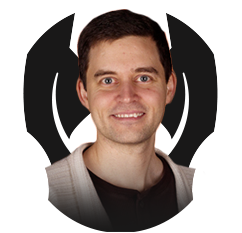
By the time we began Kaldheim vision design, Mark Globus was a veteran Wizard. Few people had a better understanding of all the steps of the process by which a Magic set is designed, produced, sold, and shipped than Mark; the product pipeline was his specialty. But Mark's mastery of the big picture did not preclude him from excelling in other areas, including game design. Mark spoke infrequently in meetings, but when he had something to say, it was always important and insightful, solving a problem that could have taken weeks to come to grips with otherwise. Mark has since retired from Wizards, but he still comes in to design sets for us occasionally.
Jenna Helland (creative lead)
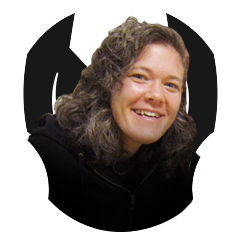
Jenna is a stalwart of the Worldbuilding team, having led the creative of many Magic sets, overseen the creation of many planes, and written many novels and stories. I really enjoy collaborating with Jenna, whether she's on my design team or I'm on her Worldbuilding team. The concept of Kaldheim was very ambitious from a worldbuilding standpoint, but Jenna was more than up to the challenge.
Dave Humpherys

Dave is one of our finest set design leads, having led some of the best sets we've created in the last few years. Dave's approach is to join the Vision Design team in the last month or two of vision design, immerse himself in the set, and subtly guide design to a place where he's confident he can extrapolate it into a fun Limited and Constructed environment.
Noah Millrod
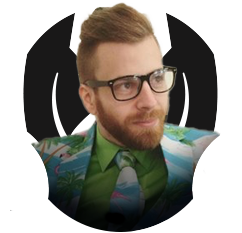
Noah has worn several hats in his time at Wizards. He's one of those people that seem to have a superhuman ability to do nearly anything well. His main job right now is as a digital product manager working in sales, but like many successful Wizards, his official job title doesn't tell the whole story. He's now in a position where he basically gets to work on any kind of project he wants, anywhere in the building. I'm happy to say that means he works for me a lot! Noah is one of my "go to" people from outside of the design group to bring in to work on my design teams. He's a champion when it comes to designing innovating, exciting Magic cards.
Ari Nieh
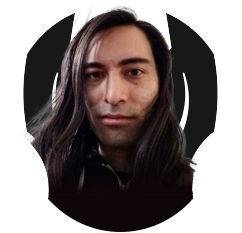
Ari was the winner of the Great Designer Search 3, and when we designed Kaldheim, he was still pretty green, so this was very much an opportunity for him to learn how things worked and get design reps in. I'd actually met Ari years before while I was a finalist in GDS2. Ari was one of several members of an informal design group dubbed "Tweet Force Alpha" with whom I collaborated on completing the design challenges. Even this early in his career, Ari had a solid foundation of design skills and a good grounding in history and culture, so he was a good fit for the job we had to do. In the years since Kaldheim vision design, Ari has leveled up considerably in his design skills and now leads design teams of his own.
Mark Rosewater
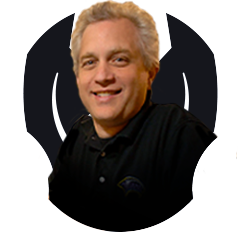
Mark likes to be on every Vision Design team for our most important sets. He had a good feel for the big picture of what the different sets releasing close to Kaldheim were doing. This is extremely valuable because with so many sets and different planes each year, it can be difficult to thread the needle between all the different themes. Mark is also deeply immersed in pop culture, which gave him insight into what elements of Norse mythology would be most recognizable to the layperson and, when we were treading in deep waters, reference-wise.
Yoni Skolnik

Yoni is of the "generation" of set design leads that started working at Wizards after I did. I love having Yoni on my team, because wherever I am weak, Yoni is strong. Are my game balance instincts off? Yoni knows what the numbers should be. Did I get tired of solving a problem and attempt to slough it off to Future Ethan? Yoni will call me on that sort of thing. Are there not enough crazy combos in the set? Yoni is definitely on top of that problem! Everyone should have a Yoni.
Ethan Fleischer (lead)
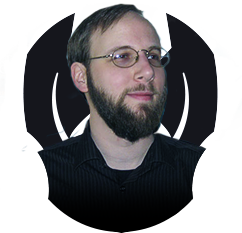
What can I say about myself? I've led many design teams by this point, but Kaldheim represents a milestone I'd set for myself when I first started working at Wizards; it's my first solo vision design lead of a set in a brand-new plane. As a designer, I really value the harmonious integration of creative treatments and game mechanics, so much so that I helped write the world guide for Kaldheim. My portfolio includes leading design teams, representing blue in the Council of Colors, special attention to Commander, and responsibility for the mechanical expressions of our Planeswalker characters. I'm also the world's leading expert on Dominarian geography.
Click here to meet the Set Design team
The following introductions are all by Dave Humpherys, Kaldheim's lead set designer. I just wanted to say a word about Dave before we got to his introductions.
Dave Humpherys (lead)

I first met Dave when he was a pro player. He was known for being a very smart, methodical player, and it was no surprise when he got voted into the Pro Tour Hall of Fame. It wasn't until many years later that Dave started working at Wizards. Whenever Dave leads a set design, he asks to be on the Vision Design team to get a good understanding of how and why the vision gets put together. This means I've had a lot of chances to work closely with Dave. I always enjoy working with him because he has a great ability to look into ideas and understand what problems they might cause further down the path and help solve those problems before they happen. I always look forward to a Dave-led set because I know I'm in for a real treat; Dave has a great ability to find potential in a vision design and maximize it. Kaldheim is no exception.
The rest of these intros are all Dave.
Corey Bowen

Corey is a designer who led the Commander product attached to Kaldheim, as he did for Ikoria: Lair of Behemoths when I led that set design. I love the range of quirky, out-of-the-box designs I get from Corey that often tell amusing stories. Corey seems to always be having fun doing his own thing, and I learn a lot from what it is that he is doing in any given playtest.
Melissa DeTora
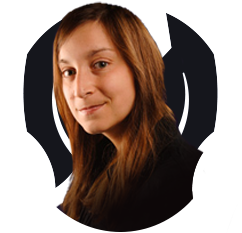
Melissa is a play designer who excels at keeping fun at the forefront of design when we often get distracted by other elements of a card. She has a strong appreciation for what changes to cards will make them mentally taxing rather than mentally challenging, especially in thinking about players across the spectrum of levels of experience with Magic.
Michael Majors
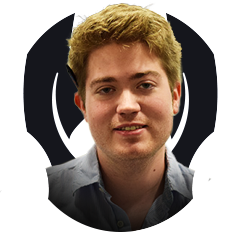
Michael is the play designer who I most associate with bringing disparate cards and themes together and understanding what interactions and decks we will need to be paying attention to and what play patterns we should expect to see as a result. That understanding is very helpful as we look to modify cards and/or broaden their roles.
Donald Smith Jr.
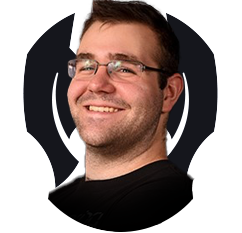
Donald is the play designer I most associate with finding cards that look fun and trying to figure out how to get them into better shape for Constructed decks, especially aggressive ones. I appreciate that he will often discover cards that we get stuck on, not give up on them, and find solutions after digging in to discover what we need.
Mark Gottlieb
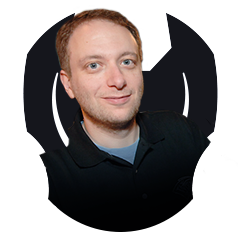
This past summer, Mark reached the 20-year milestone at Wizards of the Coast. He has a well-rounded approach to his design and has led sets such as Theros Beyond Death. Mark's general knowledge, honed by years of puzzle competitions, shines in resonant and flavorful designs. He also writes an entertaining design article when given the chance.
Bryan Hawley

Bryan has been focusing more of late on management of designers rather than design itself. That said, he has still been active in design, including as lead of Double Masters. I especially value his perspective on the more general elements and aesthetics of the structure of the set and how the mechanics are delivering on set themes.
Jenna Helland

Jenna was the creative lead for Kaldheim. She is a veteran at creating a wonderful story and setting for Magic. I am very happy with how Jenna was able to incorporate the various asks from my team and shape them into card form. I am excited with the output of our work together in bringing the stories to life and showing the breadth of what's cool from across all the realms of Kaldheim. A big thanks to the Art team who were also a huge part in making this happen.
Yoni Skolnik

Yoni has been leading set designs recently, including Core Set 2020 and the upcoming Strixhaven. Yoni has a passion for combo cards and digital spreadsheets. He is great at analyzing a set via any given slice you might want to evaluate. I enjoy that his cards explore territory that involves fun spaces to build around.
With all the designer introductions out of the way, on with the design story.
Norse-style magic (runes, omens, zombies, etc.)
One of the things we like to do when dealing with a real-world source as inspiration is examine what magic exists within their mythology. This is obviously a game about magic, so looking to see what we can do in the space of magical spells to create something that matches the source material is always valuable. There ended up being two things we designed around—Runes and Omens.
Numerous Scandinavian languages use runes as the letters of their language. Part of Norse mythology is that specific runes can grant magical abilities when placed onto items. Vision Design played around with numerous different Rune designs. I think the version their team handed over was a cycle of Auras that enchanted Equipment, enhancing them in some way. We gave them a Rune enchantment subtype so that other cards could mechanically care about them. Set Design took that idea and expanded it to make them more useful. The cycle of Runes now each enchant a permanent. It gives a specific ability to an enchanted creature and allows an enchanted Equipment to grant the same ability. There are also a couple of cards that care mechanically about Runes.

Another big part of Norse mythology (and most mythologies really) is the idea of omens, that is, the foretelling of future events. Mythologies were basically the key form of storytelling back in the day, and the idea of characters having advanced knowledge of things to come makes for cool stories. Was there a way we could capture that in the set? As with any idea, you start by figuring out mechanically what it needed to do. Omens are about the future, so obviously you had to be meddling with the future in some way. How could you do that? What if you cast a spell now that didn't happen until the future?
Magic has done things like this before. The most direct example would be the suspend mechanic from Time Spiral. You pay less than normal for the spell, but you have to pay the cost of time instead. This means that you cast the spell now and it doesn't resolve until a future turn. We also made a mechanic called rebound where you cast a spell now and it repeats at the beginning of the next turn. Both mechanics, however, involved open information. Not only would I know that the spell was going to happen on a future turn, but everyone playing would also know it. Could we do something where only the person casting it had full information?
This led us to the idea of casting a spell and exiling it face down. I think the first version had the spell happening on the next turn. The problem we found was that the mana payment had to be public, so it usually wasn't much of a mystery. Also, having to always have the spell happen on the next turn proved limiting, both for design space and because it was frustrating when things would change and the spell became meaningless.
This led us to try a version inspired by morph. You would play a card face down in exile for a set amount and then could play it on a later turn by paying its "foretold" cost (during set design, the mechanic would change its name to foretell). The first cost we tried was two colorless mana, and it ended up being the right choice. We did talk about other costs, but our first hunch proved correct with playtesting.
Foretell proved to be an interesting mechanic to design with. It could go on any card type and was pretty open in the design space that played well. The only design constraint was that we found it played better, especially in Limited, if there were a decent amount of them to help hide which foretell card you were playing. It also helped with mana smoothing, as players had options of how to cast their cards. Vision Design put the mechanic in all five colors, and Set Design kept it that way, I believe expanding the amount of them in the set.
It turns out my preview card is a foretell card, so it's time for me to show it to you all.
Click here to see Doomskar
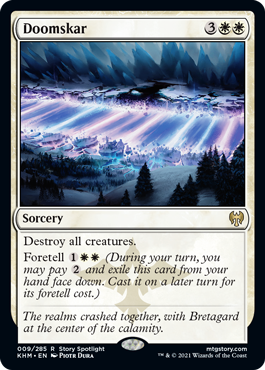
A white creature mass destruction spell seemed to be very in-flavor, as Norse mythology has a habit of predicting bad things on the horizon. Note that we also used the foretell mechanic to creatively show off the interactions of the different realms as they come into contact with one another.
Lots of fighting/combat-centric things
Another thing that comes up when people think about Norse mythology and Vikings is combat. It turns out, Magic is a game all about combat, so we felt there was a lot of potential for design. The question we asked ourselves in vision design was "is there a way to care about combat in a way differently than we traditionally care about combat?" The game has done plenty of combat-centric keywords from things like flanking and bushido that help a creature in combat to raid and battalion that improve your cards if you've been in combat, or provoke and battlecry that trigger when you enter combat and affect it in some way.
After much exploration, the idea we landed on in vision design was a mechanic we called cremate. Cremate uses creature cards in the graveyard as a resource. The idea behind it was that in encouraged you to be aggressive because having creatures die would just strengthen you later in the game. This is the combat-centric mechanic Vision Design handed over to Set Design. Set Design decided to keep it in the set but didn't feel the need for it to have a name, so they de-keyworded it. They also lowered the overall number in the set.
Set Design agreed with the larger idea that the set wanted a named combat-centric mechanic, so they added one: boast. A creature with boast has an activated ability that can only be used if the creature has attacked this turn and only once per turn. The latter came about because the activation costs can't have a tap in them due to the attacking restriction. Boast can have a wide range of effects, even ones that don't directly interact with combat.
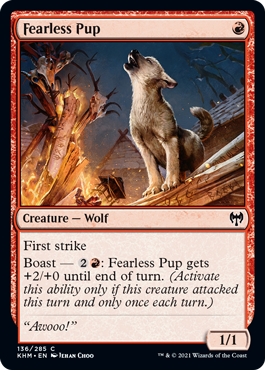
One of the things I always look for as a designer is finding ways to create game states and situations that players haven't faced before. It's one of the reasons I really like the boast mechanic in that it found a way to make attacking with a creature a resource. Want to activate a boast creature? Well, the cost is attacking with it. That has interesting ramifications that force you to think about combat in a whole new way, which was exactly the goal of making a combat-centric mechanic in the first place. Good job, Set Design.
Other resonant Viking things (helmets, boats, funerals, etc.)
This category didn't inspire any mechanics, but it did inspire a lot of top-down designs. (I'll talk about a bunch of those in my card-by-card design articles.) One of the things we always do early in vision design for a top-down set is create a list of all the things the source material has to offer, from objects and characters to stories and general trope space. If you enjoy Norse mythology or historical Vikings, I hope many of the things you expected to be in the set are there. I know we spent a lot of time on it.
Cold Climate
The final thing we had on our original list was the climate. Norse mythology takes place in northern Europe, and generally there's a lot of snow and ice. We talked during vision design about whether we wanted the snow mechanic. Snow-covered lands and cards that cared about them first showed up in Ice Age. The execution was, let's say, not optimized and didn't go over all that well with the players. Alliances, which was sold (although not designed) as an expansion to Ice Age, had a few cards added in development that cared about snow-covered lands.
A number of years later, we made Coldsnap, which was flavored as a "lost Ice Age set designed years earlier to finish the Ice Age block." In it, we introduced snow as a supertype and put it on permanents other than lands. We also had snow mana, which was produced by any card that produced mana and had the snow supertype. Coldsnap didn't go over great, so many of us in R&D thought snow was going to go away and never return. That's where things were during vision design.
But something interesting happened between vision design and set design. Modern Horizons came out, and it used the snow mechanic. Modern Horizons was trying to find old callbacks to build off of, and the idea of making more snow cards came up. This allowed the set to reprint the snow-covered lands, which there was some demand for. The snow theme started small but snowballed (as I guess snow themes are apt to do). It ended up playing a decent role in the set. And players really enjoyed it.
Well, a Norse set always wanted to have a cold theme. If snow was back on the table, Set Design decided it made sense to add it to the set. Any card that was cold themed got the keyword, and snow themes, including snow mana, were weaved into the set. The basic lands were changed to snow-covered basic lands, and a cycle of snow-covered dual lands was added.


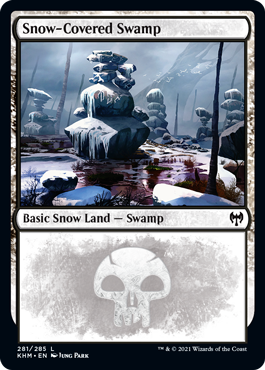
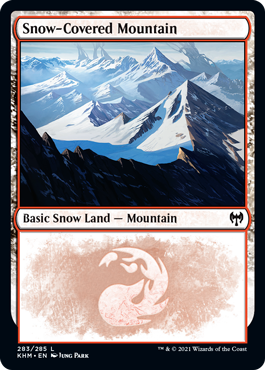

A Norse of a Different Color
That, in just two articles, is the full story of Kaldheim's design. I hope you all enjoy the set, and I'm eager to hear any feedback, whether it be about any of the mechanics, themes, individual cards, or just the set as a whole. You can email me or contact me through any of my social media accounts (Twitter, Tumblr, Instagram, and TikTok).
Join me next week for some card-by-card design stories from Kaldheim.
Until then, try not to change Norses in midstream.
#799: Planar Chaos Colorshifted Cards, Part 2
#799: Planar Chaos Colorshifted Cards, Part 2
32:15
This is the second of a two-part series talking about the 45 colorshifted cards in Planar Chaos. I talk about which cards they were colorshifted from and why they were in the set. I also talk about which ones were us testing changes for the future.
#800: Charlie Catino
#800: Charlie Catino
31:26
In this podcast, I interview Charlie Catino, one of the original Alpha playtesters and longtime Wizards of the Coast employee.
- Episode 798 Planar Chaos Colorshifted Cards, Part 1
- Episode 797 Randy Buehler
- Episode 796 Green-Blue Philosophy

